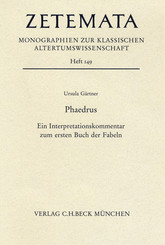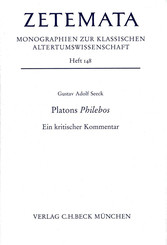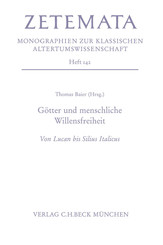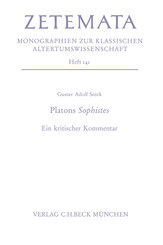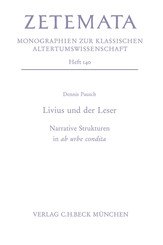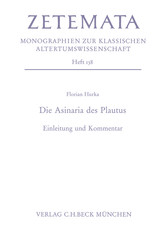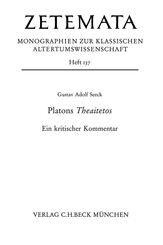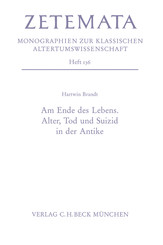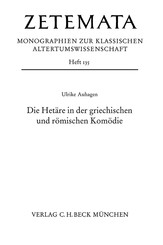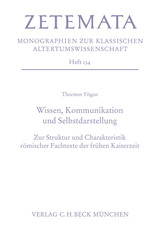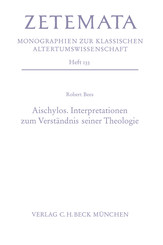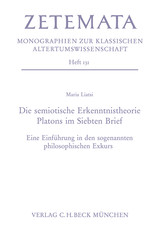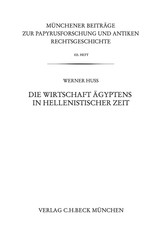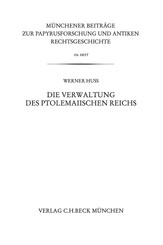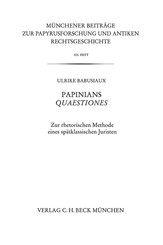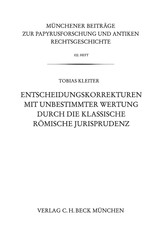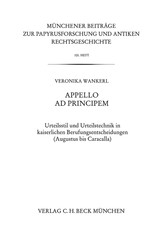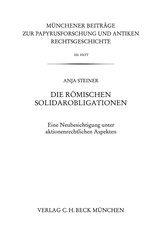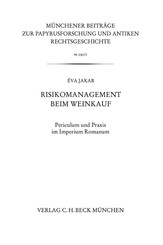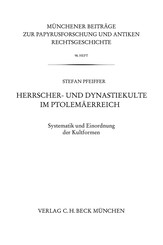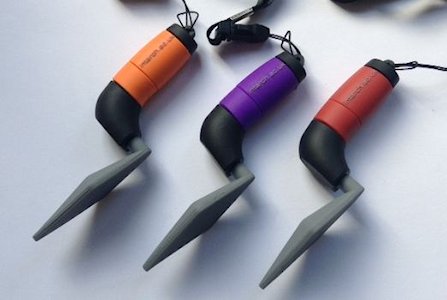We know there will be plenty of Latin teachers wondering how to fit Hallowe’en into tomorrow’s distracting day (for students), so here are all of the awesome Sententiae Antiquae’s Werewolf Week posts … should keep the kids busy for a while (they’re in ‘reverse order’, most recent first; I don’t think there is any nsfw language in any of these):
- Werewolf Week: Augustine on Arcadian Werewolf Legends | SENTENTIAE ANTIQUAE
- Werewolf Week, Therapeutic Edition: Diagnosing and Treating Lycanthropy | SENTENTIAE ANTIQUAE
- Werewolf Week, Religious Returns: St. Augustine on Lycanthropy | SENTENTIAE ANTIQUAE
- Werewolf Week, Ritual Edition: Pausanias on Human Sacrifice and Lycanthropy | SENTENTIAE ANTIQUAE
- Werewolf Week Continues: A Ghost Story from Petronius | SENTENTIAE ANTIQUAE
- Don’t Look a Wolf in the Face: Pliny on Lycanthropy | SENTENTIAE ANTIQUAE
- What’s Scarier than Werewolves? Politics (Werewolf Week Continues) | SENTENTIAE ANTIQUAE
- A Week Until Halloween? Time for some Werewolves! | SENTENTIAE ANTIQUAE
Monday, October 31, 2016
Latin Teaching Resources for Halloween from from Rogueclassicist
Werewolf Week at Sententiae Antiquae
Sunday, October 30, 2016
Portraits du Fayoum
[First posted in AWOL 6 December 2013, updated 30 October 2016]
Portraits du Fayoum

Portraits du Fayoum
Peints sur des plaquettes de bois précieux ou sur de la toile de lin, les portraits du Fayoum sont datés de la période romaine: du Ier au IVe siècle ap. J.-C.
Il en existe quelques milliers conservés dans les musées depuis que W. M. Flinders Petrie découvrit en mars 1888 "un immense cimetière d'époque romaine avec des chambres tombales en brique contenant encore les corps de leurs propriétaires". L'émotion le saisit lorsqu'il aperçoit, encore fixé sur sa momie, le premier portrait, "une jeune fille magnifiquement dessinée, dans de douces teintes grises.
La majorité des portraits funéraires présentent les visages grandeur nature. Ils doivent assurer au défunt un visage dans l'au-delà identique à celui de sa vie sur terre. Ils sont très expressifs, même après 2000 ans d'oubli.
Page 1 Page 2 Page 3 Page 4 Page 5
Page 6 Page 7 Page 8 Page 9 Page 10 Page 11 Page 12 Page 13 Page 14 Page 15 Page 16 |
 |
 125-150 ap. J.-C. bois Athènes |
 Thèbes IIe siècle ap. J.-C. bois Paris |
 Thèbes IIe siècle ap. J.-C. bois Paris |
 Thèbes IIe siècle ap. J.-C. bois Paris |
 Thèbes IIe siècle ap. J.-C. bois Paris |
 2e quart IIe siècle ap. J.-C. bois Moscou |
 Hawara 2e tiers IIe siècle ap. J.-C. bois - cadre doré Londres |
 |
 Saqqarah 253 - 268 ap. J.-C. lin Dresde |
 Saqqarah 253 - 268 ap. J.-C. bois Dresde |
Saturday, October 29, 2016
Sappho’s Poems Online
[First posted in AWOL 15 July 2011, updates 29 October 2016]
Sappho’s Poems
Sean B. Palmer
Sappho’s Poems
Sean B. Palmer
This is an attempt to collect Sappho's entire work together in one page — with Greek originals, succinct translations, and commentary.
When I first searched for Sappho's poems on the web, I found that most sites used out-of-date translations and numberings, with no original Greek. I wanted a complete work to peruse at leisure, with annotations and explanations throughout.
Whilst this page is still far from acheiving the goal of being a complete and readable edition of Sappho, it's still hopefully quite useful.
If you're new to Sappho, it's worth reading Wikipedia's introduction to her before starting on the poems. There's an awful lot of misinformation out there, so getting a good feel for the biographical and textual issues before you start on the poems will probably help you to enjoy them more.
Wörterbuch der Ägyptischen Sprache facsimile Online
[First posted in AWOL 1 February 2014, updated 29 October 2016]
WÖRTERBUCH DER AEGYPTISCHEN SPRACHE im Auftrage der deutschen Akademien hrsg. von Adolf Erman und Hermann Grapow. Bd. I-V.
WÖRTERBUCH DER AEGYPTISCHEN SPRACHE im Auftrage der deutschen Akademien hrsg. von Adolf Erman und Hermann Grapow. Bd. I-V.
Unveränderter Nachdruck. Berlin, 1971
[.pdf 64 мб]
Словарь разбит на файлы в соответствии с алфавитным порядком. В тех случаях, когда конец одной буквы и начало другой приходятся на одну страницу, эта страница в соответствующих файлах повторяется. Файлы объемом свыше 5 мб разделены на две части.
Тома I-V отсканированы и предоставлены в наше распоряжение Еленой Певчевой.
Том VII отсканировал и предоставил в наше распоряжение мистер D. Charles Pyle (Salt Lake City, USA).
Bd. I Bd. II Bd. III Bd. IV Bd.V Vorwort + A
[.pdf 1,17 мб]m
[.pdf 4,53 мб]H (H-HmD)
[.pdf 2,43 мб]s (s-srftt)
[.pdf 4,5 мб]q
[.pdf 1,79 мб]j
[.pdf 3,3 мб]n
[.pdf 4,51 мб]H (Hn-HDDdnt)
[.pdf 2,78 мб]s (srm-sDD)
[.pdf 4,37 мб]k
[.pdf 1,42 мб]a
[.pdf 2,05 мб]r
[.pdf 1,98 мб]x
[.pdf 3,42 мб]S
[.pdf 3,55 мб]g
[.pdf 1,26 мб]w
[.pdf 4,01 мб]h
[.pdf 900 кб]X
[.pdf 1,15 мб]t
[.pdf 2,6 мб]b
[.pdf 1,83 мб]z
[.pdf 1,97 мб]T
[.pdf 1,63 мб]p
[.pdf 1,95 мб]d
[.pdf 1,79 мб]f
[.pdf 325 кб]D + Unlesbares
[.pdf 2,61 мб]
Bd. VI
Deutsch-Aegyptisches Wörterverzeichnis.
Berlin-Leipzig, 1950.S. 1-75 [.pdf 3,61 мб] S. 76-155 [.pdf 3,48 мб] S. 156-256 [.pdf 4,7 мб] Bd. VII
Rücklaufiges Wörterverzeichnis.
Berlin, 1971.S. 1-67 [.pdf 3,35 мб] S. 68-132 [.pdf 3,11 мб]
DIE BELEGSTELLEN zu WÖRTERBUCH DER AEGYPTISCHEN SPRACHE. Bd. I-V.
Berlin, 1940 (II), 1951 (III), 1953 (IV, V), 1958 (I).
Все тома приложений, за исключением тома II, имеющего особую структуру, разделены на 2 части: текстовую (pt1) и иероглифическую (pt2).
Внутри каждой части файлы разбиты по объему.
II, III и IV тома отсканированы и предоставлены в наше распоряжение Владиславом Киселевичем.
Bd. I Bd. II Bd. III Bd. IV Bd.V pt1_1-45
[.pdf 5,76 мб]S. 1-201
[.pdf 6 мб]pt1_1-48
[.pdf 5,83 мб]pt1_1-35
[.pdf 3,7 мб]pt1_1-37
[.pdf 3,98 мб]pt1_46-96
[.pdf 6,22 мб]S. 202-410
[.pdf 6,04 мб]pt1_49-97
[.pdf 5,61 мб]pt1_36-85
[.pdf 5,13 мб]pt1_38-95
[.pdf 6,09 мб]pt2
[.pdf 2,98 мб]S. 411-639
[.pdf 6,66 мб]pt2
[.pdf 5,32 мб]pt2
[.pdf 4,64 мб]pt2
[.pdf 4,26 мб]Сокращения
[.pdf 836 кб]S. 640-767
[.pdf 3,72 мб]
Goodspeed Manuscript Collection, University of Chicago Library
[First poseted in AWOL 15 March 2013, updated 29 March 2016]
Goodspeed Manuscript Collection
Goodspeed Manuscript Collection
The Edgar J. Goodspeed Manuscript Collection comprises 68 early Greek, Syriac, Ethiopic, Armenian, Arabic, and Latin manuscripts ranging in date from the 5th to the 19th centuries. The acquisition of these hitherto unknown manuscripts was spearheaded by Edgar J. Goodspeed in the first half of the twentieth century in order to support new scholarship in the humanities.
With support from the Institute of Museum and Library Services National Leadership Grants for Libraries - Building Digital Resources program, the University of Chicago Library is creating a unique digital resource based on this collection. All 68 New Testament manuscripts and an additional 114 papyri fragments will be digitized in their entirety and presented with high-quality zoomable images through an interface that supports browsing within individual manuscripts and across the collection. The Goodspeed Manuscript Collection Project continues the scholarly tradition of the Goodspeed Collection itself and will support new types of research and teaching made possible by digital technologies.
Thursday, October 27, 2016
Open Access Classical Studies Books from Verlag C.H.Beck
[First posted in AWOL 17 June 2016, updated 27 October 2016]
Classical Studies Books from Verlag C.H.Beck in Open Edition
Classical Studies Books from Verlag C.H.Beck in Open Edition
Der Verlag C.H.Beck, gegründet im Jahr 1763, zählt zu den großen und traditionsreichen Namen im deutschen Verlagswesen. Sein Programm umfasst mehr als 9.000 lieferbare Titel und 70 Zeitschriften zu unterschiedlichsten Themen aus den Bereichen Recht, Geschichte, Theologie, Altertums¬wissenschaften, Literaturgeschichte, Kunstgeschichte, Naturwissenschaften und Wirtschaft. Mit einer jährlichen Produktion von bis zu 1.500 Neuerscheinungen und mehr als 14.000 Autoren rangiert der Verlag auch quantitativ unter den großen deutschen Buch- und Zeitschriftenverlagen. Der Hauptsitz des Verlags ist in München, Dependancen befinden sich in Warschau, Prag, Basel, Bukarest und Bratislava. Seit den späten 1980er Jahren erweitert C.H.Beck seine Publikationstätigkeit um den Bereich des elektronischen Publizierens.
In dieser Schriftenreihe werden unterschiedliche Themen der Altertumswissenschaften, vor allem aus dem Bereich der Klassischen Philologie, aber auch der Alten Geschichte, Philosophie und der Geschichte des Faches behandelt.
Begründet wurde die Reihe 1951. Sie wird derzeit von Eckard Lefèvre und Gustav Adolf Seeck in Verbindung mit Thomas Baier und Dieter Timpe herausgegeben. Aktuell sind 148 Bände erschienen (Stand Mai 2014), die zum großen Teil noch lieferbar sind.
Wissen, Kommunikation und Selbstdarstellung
Zur Struktur und Charakteristik römischer Fachtexte der frühen Kaiserzeit
Thorsten Fögen2009…Die semiotische Erkenntnistheorie Platons im Siebten Brief
Eine Einführung in den sogenannten philosophischen Exkurs
Maria Liatsi2008…
Die Veröffentlichungen der papyrologisch-rechtshistorischen Reihe, die 1915 von Leopold Wenger begründet wurde, behandeln die Themen Recht, Politik, Wirtschaft und Verwaltung in antiken Kulturen, insbesondere in ptolemäischer und hellenistischer Zeit. Insgesamt wurden bislang 109 Bände dieser Zeitschriftenreihe veröffentlicht (Stand Mai 2014), wovon ein Großteil noch lieferbar ist.
Papinians Quaestiones
Zur rhetorischen Methode eines spätklassischen Juristen
Ulrike Babusiaux2011…Appello ad principem
Urteilsstil und Urteilstechnik in kaiserlichen Berufungsentscheidungen (Augustus bis Caracalla)
Veronika Wankerl2009…Die römischen Solidarobligationen
Eine Neubesichtigung unter aktionenrechtlichen Aspekten
Anja Steiner2009…Herrscher- und Dynastiekulte im Ptolemäerreich
Systematik und Einordnung der Kultformen
Stefan Pfeiffer2008…
Homer and the Papyri
[First posted in AWOL 16 May 2011, updated 27 October 2016]
Homer and the Papyri
Homer and the Papyri
HOMER & THE PAPYRI
Homer and the Papyri, first created by Professor Dana Sutton of the University of California, Irvine, is here published in a second electronic edition. The edition consists of a database of Homeric papyri published prior to the year 2004.
Homer & the Papyri Editors and Advisors
Editor in Chief: Gregory Nagy, Director of the Center for Hellenic Studies
Editor Emeritus: Dana F. Sutton, The University of California, IrvineA note to users about the Homer and the Papyri database
The database archived here was created in 2002 by Michael Jones, with the cooperation and supervision of the Stoa Consortium, edited at that time by Anne Mahoney and Ross Scaife. The database is now more than a decade old and has not been updated since 2003. Instead, complete editions of Homeric papyri are now being published as part of the Homer Multitext project. What follows is an overview of the current functionality of the two major types of searches available in this archived version of Homer and the Papyri.
Searching for variants: Users may search for variants by specifying Iliad or Odyssey, book number, or a particular witness, as described on the Homer and the Papyri Help page and in the Introduction.
Searching and generating lists of papyrus witnesses: Lists of Homeric papyri (regardless of whether or not they contain variants) can be generated by the database for the Iliad and Odyssey by simply choosing the title and selecting the "search witnesses" button. This list cannot be further specified.
More Information
Read Information on the Present Edition
Read the Introduction to the Previous Web-based Edition of Homer and the Papyri
Read the Letter from Gregory Nagy to Dana Sutton, which created the present edition of Homer and the Papyri
How to Contribute
Homer and the Papyri is now part of the Homer Multitext. If you would be interested in contributing XML editions of Homeric papyri to the project, please contact the project editors, Casey Dué and Mary Ebbott. All contributions will be gratefully acknowledged and credited to their editor(s).
Wednesday, October 26, 2016
Online Coins of the Roman Empire (OCRE) News
RIC 9 published to OCRE
RIC volume 9 has been published to Online Coinage of the Roman Empire. This represents about 1,700 types and 3,200 subtypes. In total, there are now more than 43,000 Roman Imperial coin types in OCRE, spread over half a millennium from Augustus to Zeno. This was a huge undertaking with many collaborators from the ANS and DAI, as well as contributors of data from more than a dozen American and European cultural heritage institutions. Without generous support from the National Endowment for the Humanities, we may never have completed this project, which will officially come to a close in December. Since publishing the types to OCRE yesterday, I have begun the process of harvesting relevant coins from partner institutions. The British Museum alone has contributed an additional 11,600 RIC 9 coins to OCRE, and the total number of physical specimens linked into the project stands around 93,000. We hope to surpass 100,000 when the ANS and Fitzwilliam Museum coins are added soon.
Despite the official "end" of the project (with respect to meeting the specifications of the original NEH grant application), the project will continue to evolve in a variety of ways. We anticipate aggregating content from more partners, especially from the archaeological community. There are more than 200,000 Roman Imperial coins in the Portable Antiquities Scheme, but so far barely over 300 have been linked to OCRE URIs. I am continuing to build more sophisticated analysis and visualization interfaces. These advancements have been implemented directly in Nomisma.org, but I anticipate porting these code updates into OCRE and various other Numishare-based coin type projects. We also plan to unveil two new features by the end of this year: an intuitive coin type identification interface that non-specialists (collectors or archaeologists working in the field) might use to identity coins, and a faceted search function for architecture depicted on Roman coinage (which extends into Republican coins in CRRO).
While the NEH funding was instrumental in the development of OCRE specifically, the open source code and the workflows we developed for this project have had an impact on our ability to publish similar online type corpora. In 2015, we saw the release of Coinage of the Roman Republic Online and PELLA. Since the multilingual and visualization functionality are inherent to Numishare, our other projects benefit from the funding the NEH invested directly into OCRE. One of these, obviously, is the Egyptian National Library collection of Islamic coinage, which is available in both English and Arabic.
Posted by Ethan Gruber at 11:46 AM
Tuesday, October 25, 2016
David Kennedy's 'Kites in Arabia' iBook now free to download
Publications - 'Kites in Arabia' iBook now free to download
Tuesday, October 25, 2016
Tuesday, October 25, 2016
Back in 2014 we launched an iBook that brought together a lot of our research on Kites (see our blog http://www.apaame.org/2014/09/publications-kites-in-arabia-ibook.html).
The iBook is now FREE TO DOWNLOAD!
You may also be interested in the following:
The Global Kites Project: http://www.globalkites.fr/
Arabian Archaeology and Epigraphy Special Issue Desert Kites - Old Structures, New Research: http://onlinelibrary.wiley.com/doi/10.1111/aae.2015.26.issue-2/issuetoc (Pay Wall)
You can browse thousands of photographs of Kites from Jordan in our archive.
Description
In this book, Professor David Kennedy explores all aspects of kites and related structures from their basic function to more elaborate arrays of kites. Together with examples and case studies, he explores all aspects of these intriguing structures and the methods being employed to better understand them. In particular, the use of aerial archeology techniques from airborne photography in the early days to today’s use of Google Earth and similar tools.
Prior to the aerial crossing of the Jordanian desert and lava fields of the early 20th Century, little was known in the Western world of the structures built from the basalt boulders which became known as kites. News of these structures were published in the journal Antiquity and speculation began on their purpose, composition and the various styles of structure which were being observed. Kites are formed from walls built from these boulders and form a head or enclosure and a run of walls which flow out for up to more than a kilometre.
Monday, October 24, 2016
Open Access Archaeology Fund
Because it is Open Access Week, and because Internet Archaeology and the
Archaeology Data Service are both 20 years old AWOL urges you to support the Open Access Archaeology Fund:
Open Access Archaeology Fund
Open Access Archaeology Fund
To mark our shared 20th anniversary year, Internet Archaeology and the Archaeology Data Service have combined forces to launch the Open Access Archaeology Fund, with the specific aim of supporting the publishing and archiving costs of researchers who have no means of institutional support. We are asking you to support our efforts by pledging a recurring or single gift.By giving to the Open Access Archaeology Fund you help to reduce the barriers to open archaeological research and advance knowledge of our shared human past.
We are grateful for all gifts and to say thank you, everyone who donates over £25 will receive a token of our appreciation - one of our highly desirable red USB trowels. A limited number of special edition orange and purple trowels are also available for those who make donations of between £50-£74.99 (orange) and £75 and over (purple).
Please allow at least 4 weeks for delivery of your trowel.
Fund allocation
Funds will be prioritised to those without means of institutional support, namely early career researchers and independent scholars who deposit an archive with ADS or who have been accepted for publication in Internet Archaeology. As the Fund develops, we will publish on this page the total raised and a list of the articles and archives assisted by your generosity.
Thank you for your support.
The Society for Classical Studies Launches New Website Front Page, Blog, and YouTube Channel
The Society for Classical Studies Launches New Website Front Page, Blog, and YouTube Channel
The Society for Classical Studies is proud to announce many new additions to our online presence.
First is the reinvigoration of the SCS blog, which was led by the Communications Committee and its current chair, Chris Francese. Along with the blog comes a new front page to our website, which will feature the Blog content as well as Amphora articles. There will be a new blog article every week, with new Amphora content on the way.
We are also happy to showcase our YouTube channel, a new outreach vehicle for people to find out what it is we do and what Classics is about. The channel will mainly feature interviews with people touched by Classics in some way, but will also showcase any video we collect from conferences or other SCS events. A new video will come out every Monday, Wednesday, and Friday, and you can watch the first one here.
If you want to write a piece for the Blog or be interviewed for the channel please contact erik.shell@nyu.edu.
Ancient Places in Today's Library: Pleiades URIs and MARC
Ancient Places in Today's Library: Pleiades URIs and MARC
By Gabriel McKee
10/24/2016
In September, the ISAW Library submitted a proposal to the Library of Congress to add the Pleiades gazetteer to its list of authorized sources for subject heading terms. That same month the proposal was accepted, and Pleiades was entered into the official list and assigned an identifying code. With this code, place names from Pleiades can now be entered into library catalog records.
Though this may seem like a somewhat arcane bit of technical news, it’s actually a big step forward for both Pleiades and the role of libraries in the Linked Open Data movement. The ability to use Pleiades names in subject headings is useful for keyword searching, as it allows us to provide access to both the ancient and modern names of some locations. Under the cataloging rules used by American academic libraries, inhabited places are cataloged using their modern names. For instance, the latest ISAW publication, Graffiti from the Basilica in the Agora of Smyrna, is assigned the LC geographic heading İzmir (Turkey), the modern name of the city. Since Pleiades is now a recognized source of authoritative name data, we can now add to this book's record a geographic heading for the city’s Pleaides heading, which records not only one ancient name, but three: Naulochon/Smyrna/Palaia Smyrna.
But additional name access is not all that this change allows.
A recent change to MARC (MAchine-Readable Cataloging)—the standard format in which library catalog records are coded—allows for the entry of uniform resource identifiers (URIs) in subject headings. URIs—unique character strings used to identify a resource or thing—are one of the foundational principles behind Linked Data. Though you may not have heard of URIs, you probably use them every day—web URLs are a form of URI, and due to their utility and ubiquity most URIs are now structured in HTTP format and point to an online location. Though the names of places in Pleiades are useful, it is the unchanging URIs that Pleiades associates with those names and places that truly distinguish it as a 21st-century linked data resource. By encoding the URI for Smyrna (https://pleiades.stoa.org/places/550771) in the metadata for a resource about that place, we create a connection between the resource, the conceptual place, and other resources that also connect to it. The Pleiades page in turn contains references to additional resources about the place in multiple periods. The metadata model known as the Resource Description Framework (RDF) describes individual information resources—from books to websites to physical artifacts—in three-part units of information (subject : predicate : object), called triples, that connect URIs to one another semantically, representing each resource as a part of web of interconnected information. Each portion of a triple is represented by a URI. For example:
- The book Graffiti from the Basilica in the Agora of Smyrna (subject: http://www.worldcat.org/oclc/951563286) is about (predicate: http://bibframe.org/vocab/subject) the city Smyrna (object: https://pleiades.stoa.org/places/550771).
- Smyrna (subject: https://pleiades.stoa.org/places/550771) was a city (predicate: http://www.loc.gov/standards/mads/rdf/v1.html#City) in the Roman province of Asia (object: https://pleiades.stoa.org/errata/1001906)
- Polycarp (subject: https://viaf.org/viaf/2475604/) was a resident (predicate: http://rdvocab.info/ElementsGr2/placeOfResidence) of Smyrna (object: https://pleiades.stoa.org/places/550771).
- In that place, Polycarp (subject: https://viaf.org/viaf/2475604/) had the role (predicate: http://www.loc.gov/standards/mads/rdf/v1.html#natureOfAffiliation) of bishop (object: http://dbpedia.org/ontology/ChristianBishop).
- Polycarp (subject: https://viaf.org/viaf/2475604/) was the author of (predicate: http://purl.org/dc/terms/creator) a Letter to the Philippians (object: http://id.worldcat.org/fast/1361823).
RDF uses the relationships, represented by the links used above, to link resources to each other. A linked data library catalog or other database would use these links to draw connections between related resources. In the example above, a user would be able to easily navigate from Graffiti from the Basilica to Letter to the Philippians, other works by Polycarp, and other works concerning Smyrna. This would enhance the user's ability to discover information, and could highlight unexpected connections between different resources.
The use of URIs in library cataloging is relatively new, but has the power to transform the usefulness of cataloging and cataloging metadata. The Library of Congress is currently at work on the BIBFRAME (Bibliographic Framework) Initiative, an entirely new framework for resource cataloging that is intended to replace MARC. Though it is not likely to be implemented on a large scale for several years, BIBFRAME is built entirely on linked data principles, and will rely on URIs for connecting users to information. In preparation for this, the controlled vocabularies used for subjects and names are beginning to shift to a URI-based model.
The ISAW Library is ready to be an active agent in that conceptual shift. Beginning this semester, we will be adding Pleiades headings and URIs to many of our records for new materials. We are already beginning to think about different uses for this metadata, including the creation of browsable maps of our collection and the automatic updating of Pleiades pages with information about new resources that link to them. And we will also work to expand and enhance Pleiades itself, creating new Pleiades IDs for places represented in our collection but not yet in the gazetteer, particularly in Central Asia and Ancient China.
For more information about this project, please email Gabriel Mckee or Patrick Burns.
Open Access Book: Mobilizing the Past for a Digital Future
Mobilizing the Past for a Digital Future
Download the Book | Buy the Book
Mobilizing the Past is a collection of 20 articles that explore the use and impact of mobile digital technology in archaeological field practice. The detailed case studies present in this volume range from drones in the Andes to iPads at Pompeii, digital workflows in the American Southwest, and examples of how bespoke, DIY, and commercial software provide solutions and craft novel challenges for field archaeologists. The range of projects and contexts ensures that Mobilizing the Past for a Digital Future is far more than a state-of-the-field manual or technical handbook. Instead, the contributors embrace the growing spirit of critique present in digital archaeology. This critical edge, backed by real projects, systems, and experiences, gives the book lasting value as both a glimpse into present practices as well as the anxieties and enthusiasm associated with the most recent generation of mobile digital tools.
This book emerged from a workshop funded by the National Endowment for the Humanities held in 2015 at Wentworth Institute of Technology in Boston. The workshop brought together over 20 leading practitioners of digital archaeology in the U.S. for a weekend of conversation. The papers in this volume reflect the discussions at this workshop with significant additional content. Starting with an expansive introduction and concluding with a series of reflective papers, this volume illustrates how tablets, connectivity, sophisticated software, and powerful computers have transformed field practices and offer potential for a radically transformed discipline.
Edited by Erin Walcek Averett, Jody Michael Gordon, and Derek B. Counts
With additional contributions by Rebecca Bria, Bridget Buxton, William Caraher, J. Andrew Dufton, Steven J. R. Ellis, Samuel B. Fee, Shawn Fehrenbach, Eric C. Kansa, Morag M. Kersel, Marcelo Castro López, Christopher F. Motz, Brandon R. Olson, Eric E. Poehler, Adam Rabinowitz, Ted Roberts, Shawn Ross, Matthew Sayre, Adela Sobotkova, Matthew Spigelman, John Wallrodt, and Steven Wernke.
Download the book or individual chapters either from this website (below) or with full metadata at a stable URL from Digital Commons at the University of Wisconsin-Milwaukee. A paper copy of the book is available at Amazon.com.
Complete Book Download | Complete Book from Digital Commons | Purchase the Book in Paper
Table of Contents
Introduction. Mobile Computing in Archaeology: Exploring and Interpreting Current Practices Jody Michael Gordon, Erin Walcek Averett, and Derek B. Counts Download | Chapter from Digital Commons | Supplemental Materials
1.1. Why Paperless: Technology and Changes in Archaeological Practice, 1996–2016 John Wallrodt Download | Chapter from Digital Commons | Supplemental Materials
1.2. Are We Ready for New (Digital) Ways to Record Archaeological Fieldwork? A Case Study from Pompeii Steven J. R. Ellis Download | Chapter from Digital Commons | Supplemental Materials
1.3. Sangro Valley and the Five (Paperless) Seasons: Lessons on Building Effective Digital Recording Workflows for Archaeological Fieldwork Christopher F. Motz
Download | Chapter from Digital Commons | Supplemental Materials
1.4. DIY Digital Workflows on the Athienou Archaeological Project, Cyprus Jody Michael Gordon, Erin Walcek Averett, Derek B. Counts, Kyosung Koo, and Michael K. Toumazou
Download | Chapter from Digital Commons | Supplemental Materials
1.5. Enhancing Archaeological Data Collection and Student Learning with a Mobile Relational Database Rebecca Bria and Kathryn E. DeTore
Download | Chapter from Digital Commons | Supplemental Materials
1.6. Digital Archaeology in the Rural Andes: Problems and Prospects Matthew Sayre
Download | Chapter from Digital Commons | Supplemental Materials
1.7. Digital Pompeii: Dissolving the Fieldwork-Library Research Divide Eric E. Poehler
Download | Chapter from Digital Commons | Supplemental Materials
2.1. Reflections on Custom Mobile App Development for Archaeological Data Collection Samuel B. Fee Download | Chapter from Digital Commons | Supplemental Materials
2.2. The Things We Can Do with Pictures: Image-Based Modeling and Archaeology Brandon R. Olson Download | Chapter from Digital Commons | Supplemental Materials
2.3 Beyond the Basemap: Multiscalar Survey through Aerial Photogrammetry in the Andes Steven A. Wernke, Gabriela Oré, Carla Hernández, Aurelio Rodríguez, Abel Traslaviña, and Giancarlo Marcone Download | Chapter from Digital Commons | Supplemental Materials
2.4. An ASV (Autonomous Surface Vehicle) for Archaeology: The Pladypos at Caesarea Maritima, Israel Bridget Buxton, Jacob Sharvit, Dror Planer, Nikola Mišković, and John Hale Download | Chapter from Digital Commons | Supplemental Materials
3.1. Cástulo in the 21st Century: A Test Site for a New Digital Information System Marcelo Castro López, Francisco Arias de Haro, Libertad Serrano Lara, Ana L. Martínez Carrillo, Manuel Serrano Araque, and Justin St. P. Walsh Download | Chapter from Digital Commons | Supplemental Materials
3.2. Measure Twice, Cut Once: Cooperative Deployment of a Generalized, Archaeology-Specific Field Data Collection System Adela Sobotkova, Shawn A. Ross, Brian Ballsun-Stanton, Andrew Fairbairn, Jessica Thompson, and Parker VanValkenburgh Download | Chapter from Digital Commons | Supplemental Materials
3.3. CSS for Success? Some Thoughts on Adapting the Browser-Based Archaeological Recording Kit (ARK) for Mobile Recording J. Andrew Dufton Download | Chapter from Digital Commons | Supplemental Materials
3.4. The Development of the PaleoWay Digital Workflows in the Context of Archaeological Consulting Matthew Spigelman, Ted Roberts, and Shawn Fehrenbach Download | Chapter from Digital Commons | Supplemental Materials
4.1. Slow Archaeology: Technology, Efficiency, and Archaeological Work William Caraher Download | Chapter from Digital Commons | Supplemental Materials
4.2. Click Here to Save the Past Eric C. Kansa Download | Chapter from Digital Commons | Supplemental Materials
5.1. Response: Living a Semi-digital Kinda Life Morag M. Kersel Download | Chapter from Digital Commons | Supplemental Materials
5.2. Response: Mobilizing (Ourselves) for a Critical Digital Archaeology Adam Rabinowitz Download | Chapter from Digital Commons | Supplemental Materials
***
Some open access content that complements this book:
J. Huggett, “Challenging Digital Archaeology.” Open Archaeology 1 (2015): 79-85.
J. Huggett, “A Manifesto for an Introspective Digital Archaeology,” Open Archaeology 1 (2015): 86-95.
Eric C. Kansa, Sarah Whitcher Kansa, and Ethan Watrall, eds. Archaeology 2.0: New Approaches to Communication and Collaboration. Cotsen Digital Archaeology 1. Cotsen Institute of Archaeology 2011.
Brandon R. Olson and William R. Caraher, Visions of Substance: 3D Imaging in Mediterranean Archaeology. Grand Forks, ND: The Digital Press at the University of North Dakota 2015.
Christopher H. Roosevelt, Peter Cobb, Emanuel Moss, Brandon R. Olson & Sinan Ünlüsoy, “Excavation isDestructionDigitization: Advances in Archaeological Practice,” Journal of Field Archaeology 40.3 (2015), 325-346.


